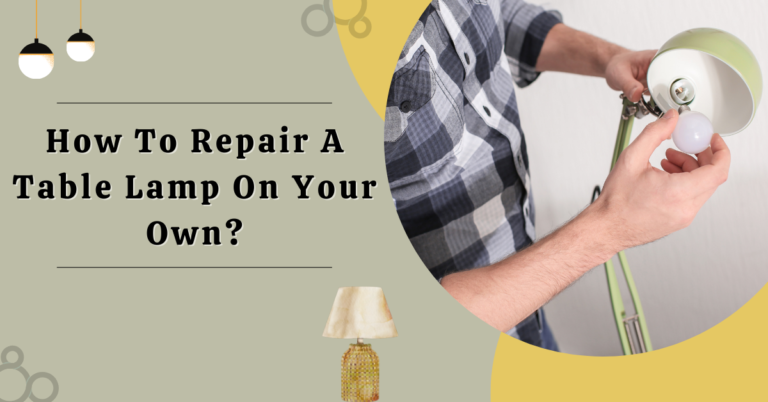
Repairing damaged table lamps is a common DIY project. Whether the damage is cosmetic or structural, a comprehensive understanding of the repair process can bring your lamp back to life. A damaged table lamp can be a real pain, interrupting your decor and ruining your mood. This comprehensive guide provides a detailed explanation of how to effectively diagnose and resolve various issues related to damaged table lamps. We will cover everything from simple repairs to more complex scenarios. This article will be divided into several sections, starting with the causes of damage and progressing to practical steps on how to effectively repair table lamps.
Understanding the Causes of Table Lamp Damage
Identifying Common Problems
Table lamps are susceptible to a range of damages. These can range from minor scratches and scuffs to more serious problems like broken lampshades, frayed wiring, or even completely shattered bases. One common issue is damage caused by mishandling. This can occur when lamps are knocked over, moved carelessly, or if the electrical components inside get damaged. External factors like humidity, direct sunlight, or even insect infestations can also contribute to the deterioration of a table lamp over time. Careful attention to the different types of damage can significantly improve the chances of fixing the problem quickly and efficiently. Different causes often require unique solutions. Identifying the precise source of the damage is your first priority, as different repairs demand different procedures.
Assessing the Damage for Table Lamps
Visual Inspection
Before starting any repair, a thorough visual inspection is crucial. Assess the extent of the damage to the lampshade, base, and electrical components. Look for cracks, chips, or loose parts on the lampshade. Examine the lamp base for any signs of damage to the metal or plastic components. Check for any frayed wires, exposed electrical connections, and loose screws. With this visual inspection, you should be able to develop a plan to make the needed repairs.
Troubleshooting Common Table Lamp Issues
Lamp Shade Repair
If the lamp shade is cracked, chipped, or torn, you can use a variety of repair methods depending on the severity of the damage. For small cracks or chips, use clear epoxy or resin to fill them in. Larger tears or holes may require replacing the lampshade altogether, or applying suitable reinforcement materials. Carefully follow the instructions provided with any repair kits to achieve the desired outcome. Consider purchasing a new shade if the repair is too complex. Replacing the shade is a sure way of restoring the aesthetic of your lamp. The same principles apply when the base is damaged; you might have to replace or reinforce the damaged base to ensure longevity and stability.
Repairing Table Lamp Wiring and Electrical Components
Safe Wiring Practices
Dealing with electrical components requires caution. Always disconnect the power source before handling any wiring or electrical components. Inspect wires for any damage, such as breaks, frays, or exposed insulation. If wires are damaged, replace them with appropriate gauge wire, ensuring proper insulation. Professional assistance is always recommended if you are unsure about working with electrical components. Improper electrical connections or repairs can lead to accidents or dangerous situations. Be extremely cautious when dealing with table lamp wiring, following safety guidelines to avoid electrical shocks or hazards.
Replacing Lamp Bulbs and Other Components
Bulb Selection
Choosing the correct replacement bulb is essential for optimal performance and safety. Always refer to the manufacturer’s instructions to determine the appropriate bulb type and wattage. This will ensure proper operation and avoid potential overheating issues. Carefully match the new lamp to the original, considering characteristics like the shape and the bulb type. If the original bulb is not available or you are uncertain about what type to use, consulting a lighting professional is a safe practice to follow.
In conclusion, repairing damaged table lamps can be a rewarding DIY project, especially when you follow a step-by-step guide. By understanding the potential causes of damage, utilizing the right tools and techniques, and handling components with care, you can effectively restore your lamps to their former glory. Remember to prioritize safety and seek professional help if you’re unsure about any aspect of the repair process. If you’re looking to avoid potential future issues, consider investing in lamp covers or protective coverings to prevent scratches and damage from occurring in the first place. Contact us today for more helpful advice! We are happy to assist you!